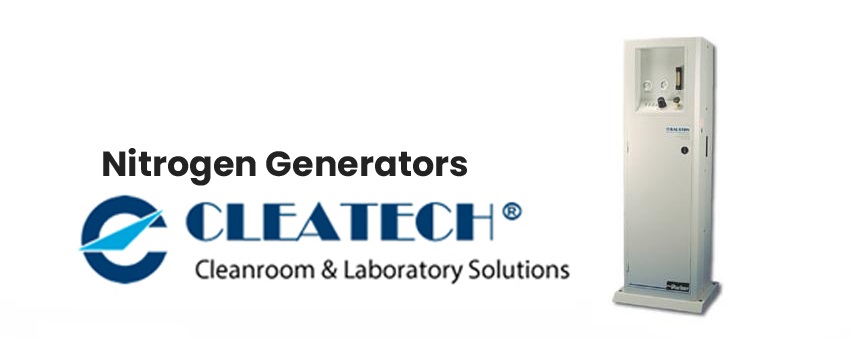
What is a Nitrogen Generator and How Does it Work?
In today’s industrial landscape, the need for reliable and cost-effective sources of high-purity nitrogen gas is paramount. Nitrogen plays a vital role in various industries, from food packaging and pharmaceuticals to electronics manufacturing and oil and gas. To meet this demand, nitrogen generators have become a popular solution, offering a more efficient and sustainable alternative to traditional nitrogen supply methods.
In this comprehensive guide, provided by Cleatech LLC, we will delve into the world of nitrogen generators, exploring what they are, how they work, and why they have gained prominence in various sectors. By the end of this article, you’ll have a clear understanding of nitrogen generators and how they can benefit your business.
Understanding Nitrogen Generators
What is a Nitrogen Generator?
A nitrogen generator, as the name suggests, is a device designed to produce nitrogen gas on-site, eliminating the need for cumbersome nitrogen cylinders or liquid nitrogen deliveries. It offers a continuous and reliable source of nitrogen gas for various industrial applications.
Why Choose a Nitrogen Generator?
The primary motivation behind investing in a nitrogen generator is the cost-efficiency and convenience it offers. Here are some compelling reasons to choose a nitrogen generator:
Cost Savings: Nitrogen generators significantly reduce operational costs compared to traditional nitrogen supply methods like cylinders or liquid nitrogen.
Sustainability: Nitrogen generators promote environmental sustainability by eliminating the need for nitrogen transportation, reducing carbon emissions, and minimizing waste.
On-Demand Supply: Nitrogen generators provide a steady supply of high-purity nitrogen gas, ensuring that you have the gas you need precisely when you need it.
Quality Control: With a nitrogen generator, you have control over the purity and quality of the nitrogen gas, crucial in applications where gas quality is critical.
How Nitrogen Generators Work
Principle of Operation
Nitrogen generators work on the principle of separating nitrogen from the surrounding air, which consists of approximately 78% nitrogen and 21% oxygen, along with trace amounts of other gases. The two most common methods for generating nitrogen are:
Membrane Nitrogen Generators: These generators use semi-permeable membranes to separate nitrogen from air. The membranes allow nitrogen molecules to pass through while trapping oxygen and other impurities.
Pressure Swing Adsorption (PSA) Nitrogen Generators: PSA generators use adsorbent materials like carbon molecular sieves to selectively adsorb oxygen and other impurities, allowing nitrogen to pass through.
Membrane Nitrogen Generators
Air Inlet: The process begins with ambient air being drawn into the generator through an inlet.
Membrane Separation: Inside the generator, the air passes through a series of semi-permeable membranes. These membranes selectively allow nitrogen molecules to permeate through while blocking oxygen and other impurities.
Nitrogen Collection: The purified nitrogen gas is collected and stored for use, while the remaining oxygen-rich air is vented back into the atmosphere.
Continuous Operation: Membrane nitrogen generators operate continuously to provide a steady supply of nitrogen gas.
Pressure Swing Adsorption (PSA) Nitrogen Generators
Adsorption Beds: PSA nitrogen generators consist of two adsorption beds filled with carbon molecular sieves. One bed produces nitrogen while the other is regenerated.
Adsorption Phase: During the adsorption phase, compressed air is directed into one of the beds. The carbon molecular sieves adsorb oxygen and other impurities, allowing nitrogen to flow through and exit as the product gas.
Regeneration Phase: When one bed becomes saturated with adsorbed gases, the system switches to the regeneration phase. A portion of the previously adsorbed gases is released by reducing the pressure in the bed. This purging process prepares the bed for the next adsorption cycle.
Continuous Operation: PSA generators alternate between adsorption and regeneration cycles, ensuring a continuous supply of high-purity nitrogen gas.
Applications of Nitrogen Generators
Food Packaging
Nitrogen generators are widely used in the food packaging industry to extend the shelf life of perishable products. By replacing the air inside food packaging with nitrogen, oxidative reactions are inhibited, preventing spoilage and preserving the product’s freshness.
Pharmaceuticals
In pharmaceutical manufacturing, maintaining a controlled atmosphere with high-purity nitrogen is crucial. Nitrogen generators are employed to create an inert environment, ensuring the safety and efficacy of pharmaceutical products.
Electronics Manufacturing
The electronics industry relies on nitrogen for soldering and reflow processes. Nitrogen generators supply the consistent high-purity nitrogen required to reduce defects and improve solder joint quality during printed circuit board assembly.
Oil and Gas
In the oil and gas sector, nitrogen generators are used for various purposes, including pressure testing pipelines, purging equipment, and preventing explosions in hazardous areas by displacing oxygen.
Laboratory and Research
Research laboratories often require high-purity nitrogen for various analytical instruments, such as gas chromatographs and mass spectrometers. Nitrogen generators offer a cost-effective and reliable source of this essential gas.
Selecting the Right Nitrogen Generator
Consider Your Nitrogen Purity Requirements
The purity level of nitrogen required for your application is a crucial factor in choosing the right generator. Some applications demand ultra-high purity nitrogen, while others can operate with lower purity levels.
Flow Rate and Pressure
Determine the flow rate and pressure requirements of your application. Nitrogen generators come in various sizes and capacities, so it’s essential to choose one that can meet your specific demands.
Type of Nitrogen Generator
Consider whether a membrane nitrogen generator or a PSA nitrogen generator is more suitable for your needs. Membrane generators are best for lower purity levels, while PSA generators excel at producing high-purity nitrogen.
Space and Installation
Evaluate the available space for installing the nitrogen generator. Ensure that you have sufficient space and the necessary infrastructure, such as power and compressed air connections.
Maintenance and Support
Check the maintenance requirements of the nitrogen generator and inquire about available technical support and service options. A reliable supplier should offer maintenance plans and readily available spare parts.
Maintenance and Care
Regular Inspections
To ensure the optimal performance of your nitrogen generator, schedule regular inspections. Check for leaks, pressure levels, and the condition of filters or membranes, depending on the type of generator.
Filter Replacement
Filters play a crucial role in maintaining the purity of the generated nitrogen. Replace filters as recommended by the manufacturer to prevent contaminants from entering the system.
Calibration
Calibrate the nitrogen generator as needed to maintain accurate purity levels. Calibration ensures that the generator produces nitrogen gas within the specified purity range.
Emergency Preparedness
Develop a contingency plan in case of generator malfunction. It’s essential to have backup nitrogen supply options to avoid disruptions to critical processes.
Environmental Benefits of Nitrogen Generators
Reduced Carbon Footprint
By eliminating the need for transporting nitrogen gas in cylinders or liquid form, nitrogen generators contribute to a significant reduction in carbon emissions associated with transportation.
Resource Conservation
Nitrogen generators help conserve valuable resources by reducing the demand for nitrogen production plants and decreasing the reliance on nitrogen storage tanks.
Waste Minimization
The use of nitrogen generators minimizes the generation of hazardous waste, such as empty nitrogen cylinders, which can pose disposal challenges.
Conclusion
In summary, nitrogen generators have emerged as indispensable tools across various industries, offering a reliable, cost-effective, and environmentally friendly solution for nitrogen gas supply. Understanding how nitrogen generators work, their applications, and the factors to consider when selecting one is essential for businesses looking to optimize their nitrogen usage.
By investing in a nitrogen generator that suits your specific needs, you can enhance the quality of your processes, reduce operational costs, and contribute to a more sustainable future. Whether you’re in food packaging, pharmaceuticals, electronics manufacturing, or any other industry, the benefits of nitrogen generators are undeniable, making them a smart choice for businesses seeking efficiency and reliability in their operations.



